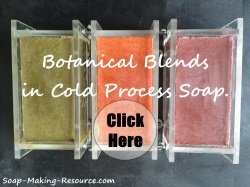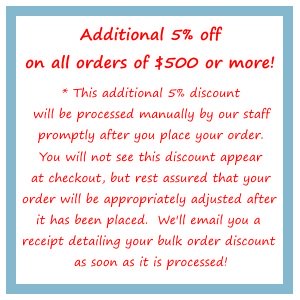Fatty Acids and Soap Making
So what's the deal with fatty acids and how do fatty acids and soap making relate? Well, the fatty acid content of your ingredients will largely determine the characteristics found within your finished product. It's that important! Whether your bar ends up with a creamy lather or a bubbly lather, turns out hard or soft, has conditioning properties or great cleansing abilities depends largely on what fatty acids make up the ingredients you are using.
Remember that your acids (soap making oils) are made up of a combination of different fatty acids. I came up with this integrated saponification table to kind of give you an idea of what the oil with its particular fatty acid combination will do to your soap.
Keep in mind that not all soap makers care to learn about this information. In fact, some like to stay far away from any hint of the chemistry side of soap making. If that's you... it's OK. Other soap makers love to learn all they can about their art! Although understanding fatty acid values used to be more important for creating successful recipes, with the use of a soap calculator you can now squeak by without this knowledge.
For those of you who would like to learn some of the basics about fatty acids and soap making... read on! This page is a great overview and a must read even for those who don't like chemistry! Here I'll just teach you what you need to know as fatty acids relate to soap making and won't get technical with all the extra chemistry jargon.
|
Sign Up Today!
*Your information is SAFE with us! |
Here we go...
Lauric Acid will add hardness to your bar, promotes a fluffy lather and cleans very well... almost too well. Large amounts of lauric acid will create an excessively drying product as your natural skin oils will be stripped because of its amazing cleansing abilities. Just try not to go overboard with ingredients like coconut oil, Babassu oil or palm oil that have large amounts of lauric acid in them.
Linoleic Acid will add conditioning and moisturizing properties to your soap bar. Some also report that a silky feel is added to their product when using ingredients high in this acid. The only thing to really watch out for is DOS (dreaded orange spots) as it tends to go rancid more quickly then the other fatty acids. Just be leery of using too much of an ingredient that has a high content of linoleic acid, especially if you want your bar to last a long time.
Linolenic Acid will add conditioning properties and moisturizing properties to your soap creating a very mild finished product.
Oleic Acid will also add conditioning properties and moisturizing properties to your soap. It will not produce a very good lather though. Some say that oleic acid is what gives your bar that slippery feel.
Palmitic Acid will add hardness to your bar and a creamy/stable lather. Careful though... too much can be over drying!
Ricinoleic Acid will add conditioning properties, a fluffy lather and some creamy/stable lather! This fatty acid is prominent in castor oil and is great for adding a luxurious lather to the finished product even if only used in small amounts.
Stearic Acid will offer many of the same characteristics as palmitic acid. Once again, you'll gain hardness to your bar and add a creamy/stable lather.
Myristic Acid will add hardness to the bar, offer good cleansing properties and adds a nice fluffy lather. Again, because of its cleansing abilities, too much myristic acid will produce somewhat of a drying product.
Iodine Value: Yes, I know... the iodine value of a recipe is not exactly a fatty acid, but I decided to throw it in here anyway. What exactly is an iodine value? The iodine value is the measure of the number of grams of iodine that will unite with exactly 100 grams of the oil in question. As a broad rule, the higher the iodine value the softer the bar and the more conditioning properties it will have. Alternately, the lower the iodine value the harder the bar and the less conditioning properties it will have. Remember that this is just a general rule as there are some exceptions.
Now that you know about the main fatty acids and what they will add to your soap, creating the perfect recipe will be a cinch, right? Umm... not really! Some say that combining oils is more of an art then a science. I tend to agree. As you gain more experience, you will learn from your mistakes and successes the best combinations of various soap making oils to create a wonderful bar of soap. Of course, a high quality soap calculator will make this process much easier for you.
Keep in mind that you have a great opportunity to get a little head start through this website and not have to experience the failure that some soap makers have to go through in the very beginning. Here at soap-making-resource.com you'll learn from my experience as I share my personal soap recipes and let you know what works and what doesn't when it comes to oil combinations and other soap making topics!
Click here to learn about SAP values











